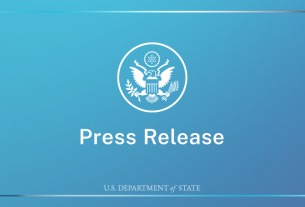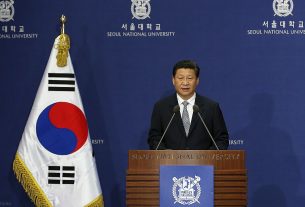It is 7.30am at Terminal 2E at Charles de Gaulle airport near Paris, and in the line leading to the security gates, an executive is removing his belt with a mechanical gesture, a mother is taking baby bottles out of her bag, and a tourist is sighing as he unties his shoes. Everyone is moving forward in beep-punctuated silence, only disturbed by the sound of bins moving along the conveyor belts.
This scene repeats itself relentlessly: according to the International Air Transport Association, 4.89 billion passengers took a flight in 2024, meaning that more than 13 million people a day go through such security checkpoints. (The Trump administration recently ended the requirement for people to remove shoes at US airports “during regular security checks”.)
At first glance, going through airport security may seem like nothing more than a necessary technical procedure. Viewed from an anthropological perspective, however, this mundane moment reveals a transformation of our identities that is as effective as it is subtle. Something strange happens in these queues: we enter them as citizens, consumers, professionals – and leave them as “passengers in transit”. This metamorphosis, which we take for granted, deserves a closer look.
The dynamics of ritual transformation
What strikes us first in these airport scenes is the gradual, systematic dispossession of personal belongings, clothing, and status symbols deposited into plastic bins before they disappear from view. Then, there is the arbitrary character of the underlying logic: why shoes and not underwear? Why 100 ml and not 110 ml? This apparent lack of coherence actually serves a symbolic purpose: it’s there to create a sense of dispossession that touches on the individual’s social status attributes.
As early as 1909, ethnographer Arnold van Gennep identified separation as the first phase of rites of passage. Individuals must abandon their previous state, shedding what defined them in the secular world. The suited executive becomes an anonymous body, temporarily stripped of his attire, and subjected to the same technological gaze as everyone else. This forced egalitarianism is not a side effect. It is actually central to the process: it prepares for a transformation of identity by neutralizing, albeit temporarily, the usual social hierarchies.
Then comes the screening: scanners, detectors, questions about intentions. “Why are you travelling? Who are you going to see? Did you pack your bags yourself?” Every traveller becomes a temporary suspect who must prove their innocence. This reversal of the burden of proof – of the fundamental principle that one is “innocent until proven guilty” – goes largely unnoticed since it seems entirely “logical” in these circumstances.
This phase corresponds to what Van Gennep called the margin or liminality, a concept later developed by anthropologist Victor Turner: a moment when subjects, deprived of their usual social attributes, find themselves in a state of vulnerability that makes them malleable and ready to be transformed. In this technological in-between, we are no longer fully citizens, nor are we travellers just yet.
Eventually, there is what is called reintegration, to use another term coined by Van Gennep: we are now permitted to enter the area beyond security checks. Officially, we have become “passengers” – a status that requires docility, patience, and the acceptance of various constraints “for the sake of our own safety”. This area, with its duty-free shops and overpriced cafés, highlights this ritual transformation, since we are no longer citizens exercising our right to travel, but global consumers in transit, stripped of our political and territorial roots.
A weekly e-mail in English featuring expertise from scholars and researchers. It provides an introduction to the diversity of research coming out of the continent and considers some of the key issues facing European countries. Get the newsletter!
The paradox of the ‘security theater’
The troubling paradox with security scanners is that although they effectively detect prohibited items (forgotten knives, suspicious liquids) and act as a real deterrent, they fall short when faced with sophisticated threats: in 2015, US test teams succeeded in smuggling fake weapons in 95% of their attempts.
Between 2007 and 2013, the US behaviour detection programme SPOT cost $900 million and failed to detect a single terrorist. It missed the only real terrorists who passed through airports, but there were no hijackings in the United States. The programme therefore appears to be both useless (in the absence of any real threat) and ineffective (in failing to detect real threats).
This lack of operational efficiency is compounded by a major economic imbalance: according to engineer Mark Stewart and political scientist John Mueller, the actual reduction in the risk of terrorism resulting from the tens of millions invested annually by airports is so limited that the costs far outweigh the intended benefits.
Security expert Bruce Schneier refers to this logic as “security theater” – measures primarily designed to reassure the public rather than neutralize the most serious threats. These measures are not dysfunctional, but rather a rational response to social expectations.
After a terrorist attack, the public expects visible measures that, although of questionable effectiveness, will calm collective fears. The “security theater” responds to this demand by producing a sense of protection that helps maintain confidence in the system. Researchers Razaq Raj and Steve Wood of Leeds Beckett University describe how this theater is staged in a way that is reassuring, but sometimes discriminatory, at airports.
This explains why these measures persist and are becoming more common despite their limited results. In addition, they help reinforce a tacit acceptance of authority. This phenomenon relies largely on the status quo bias, which locks us into established systems, and on a societal dynamic of ever-increasing demands for security, with no apparent possibility of turning back.
Learning to be docile
These security checks teach us something more significant than meets the eye. They condition us to accept surveillance as something normal and necessary, benevolent even. This acceptance isn’t limited to airports; it extends to other social contexts. We learn to “show our ID”, to provide justification for our movements, and accept that our bodies be scrutinized “for our own good”.
This system also works by reversing the roles. Resistance becomes suspicious: anyone who questions the procedures, refuses an additional search or gets annoyed by delays is automatically labelled as a “problem”. The binary character of such moral classification – good, docile passengers versus difficult passengers – tends to turn criticism into an indication of potential guilt.
Over time, airport security gestures and their repetition become part of our bodily habits. We anticipate constraints by wearing shoes without laces, carrying prepackaged liquids and making our computers accessible. We develop what philosopher Michel Foucault called “docile bodies”: bodies trained by discipline to internalize constraints and facilitate control.
Beyond airports
The Covid-19 pandemic also introduced similar practices: certificates, passes and behaviours that have become near-rituals. We have become accustomed to “showing ID” for access to public spaces. With each new shock, new collective rules are established, which permanently alter our reference points.
The requirement for passengers to remove their shoes at airports actually dates back to a single failed attempt to carry out a terrorist attack: the December 2001 incident in which a man named Richard Reid concealed explosives in his shoes. One man, one failure… and travellers routinely complying 24 years later where the requirement still exists. This is just one example of an event among others which resonate as “founding myths” used to normalize a number of constraints.
French sociologist Didier Fassin notes the emergence of a “moral government” where obedience becomes a proof of ethics and where questioning control turns into a sign of civic irresponsibility. This evolution is remarkable in that it is largely invisible: we do not see the ritual at work, we just experience “necessary measures”. This normalization probably explains why such transformations encounter little to no resistance.
Anthropology teaches us that the most effective rituals are those that are no longer perceived as such. They become obvious, necessary and indisputable. The system uses what US political scientist Cass Sunstein calls “sludge”. Unlike “nudge”, which subtly encourages good behaviour, sludge operates through friction, making resistance more costly than cooperation. Social psychology research on compliance without pressure suggests that we are more likely to accept constraints when we feel we have chosen them. By believing that we are making a free choice to board a plane, we freely accept all the constraints that come with it.
Challenging the obvious
The conscious recognition of such mechanisms does not necessarily imply that they should be criticized or opposed. There are legitimate requirements associated with collective security. Being aware of these transformations, however, leads us to question and discuss their rationale, rather than just blindly submitting to them.
Philosopher Hannah Arendt pointed out that understanding power is a step toward regaining one’s capacity for action. Perhaps this is what is at stake here – not rejecting all constraints, but retaining the ability to think them through.



